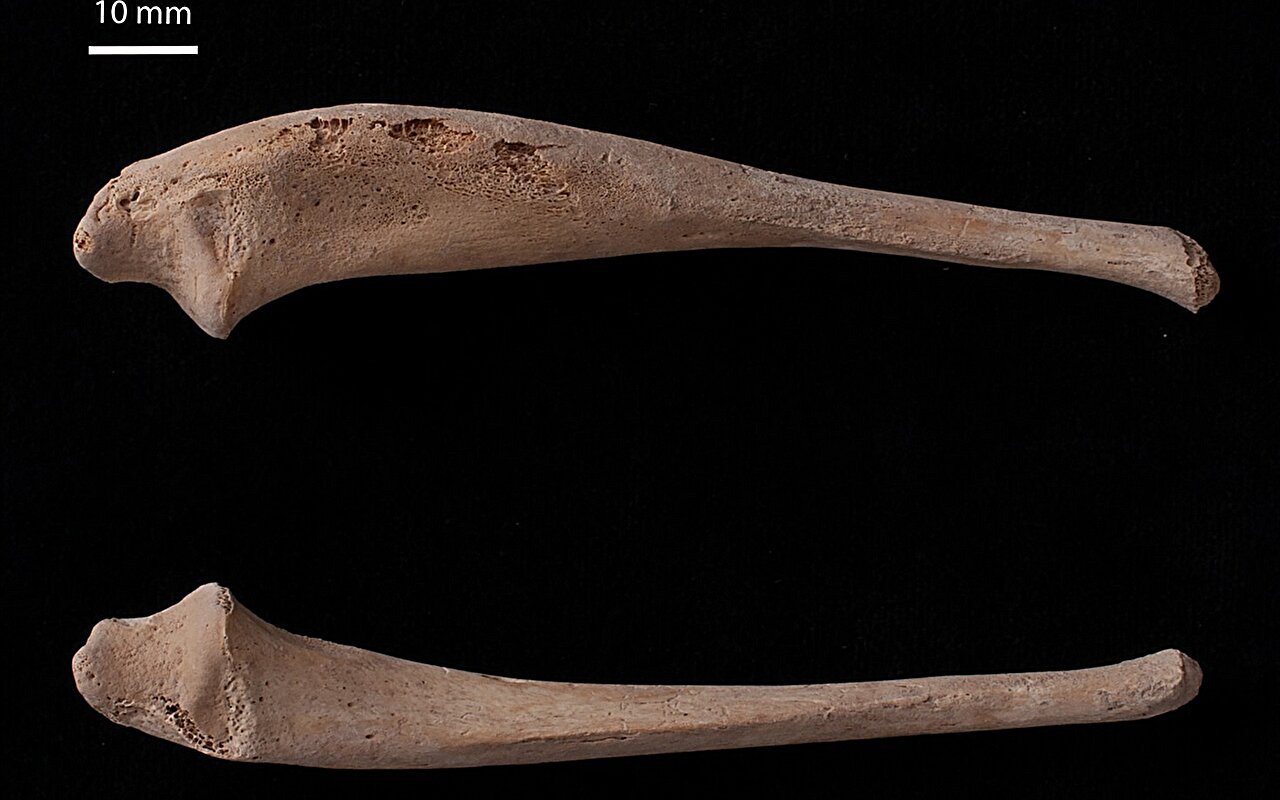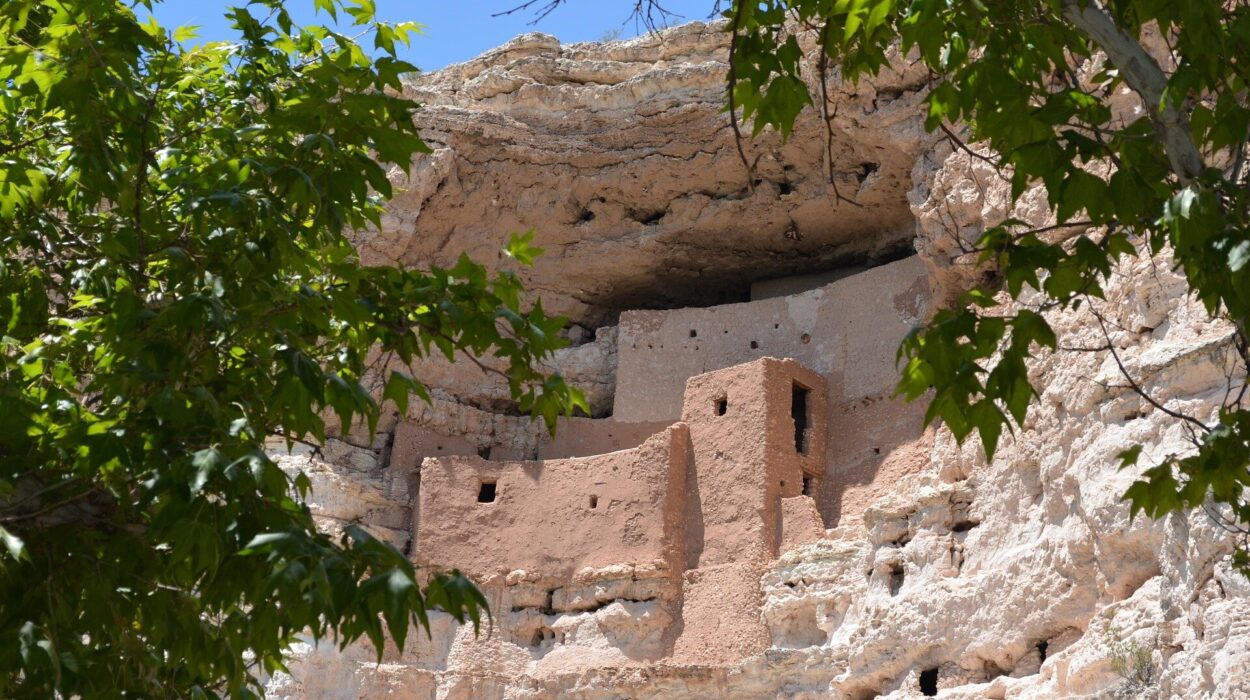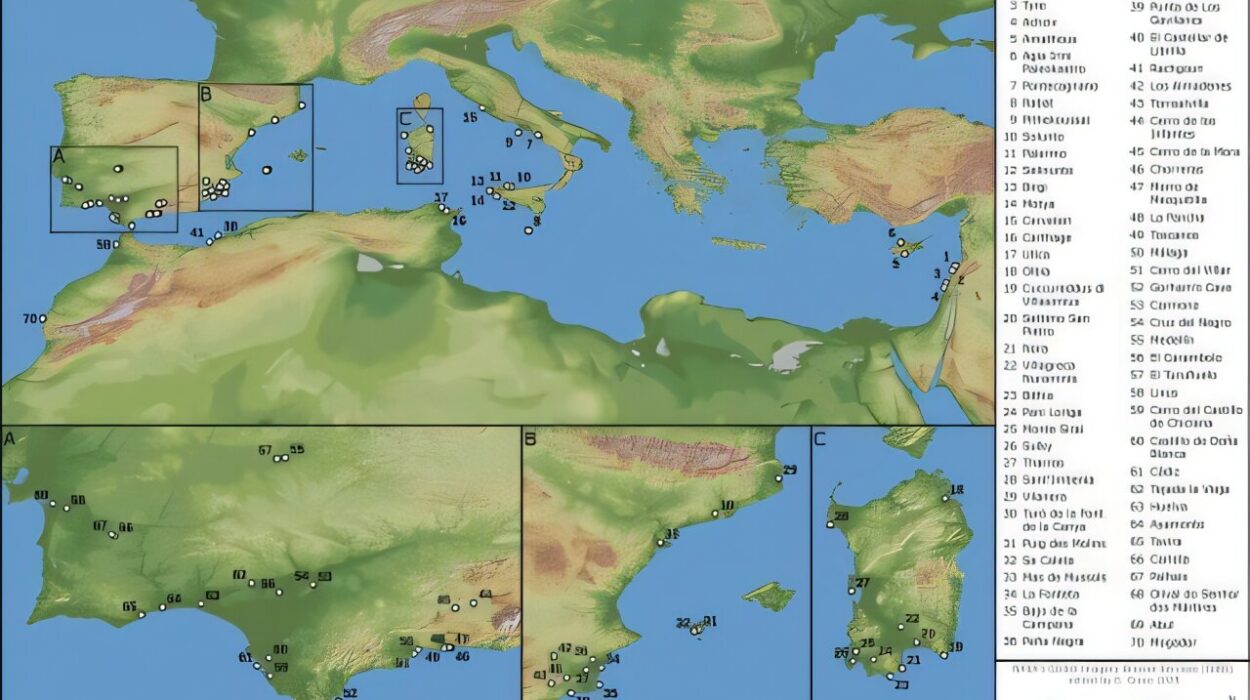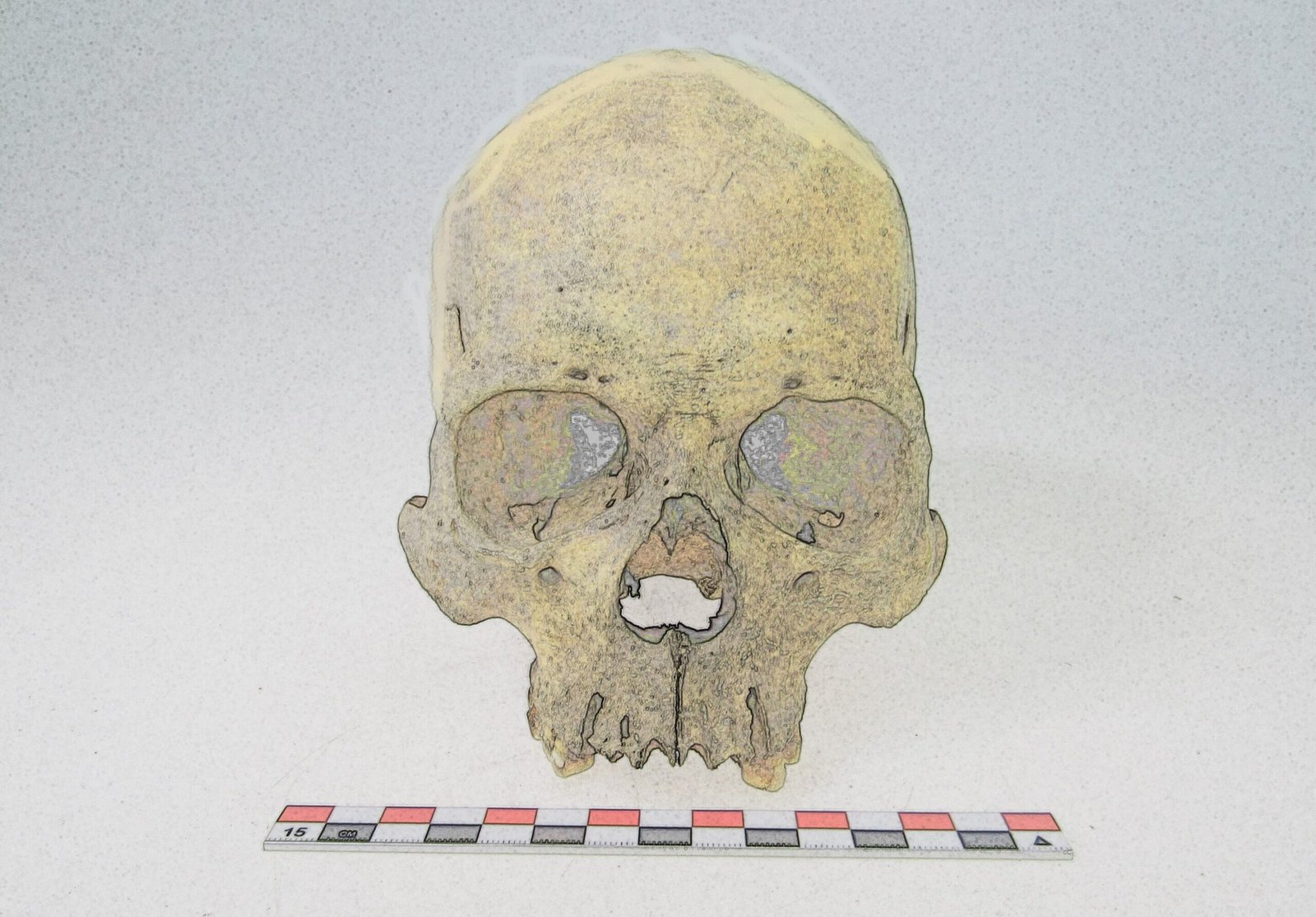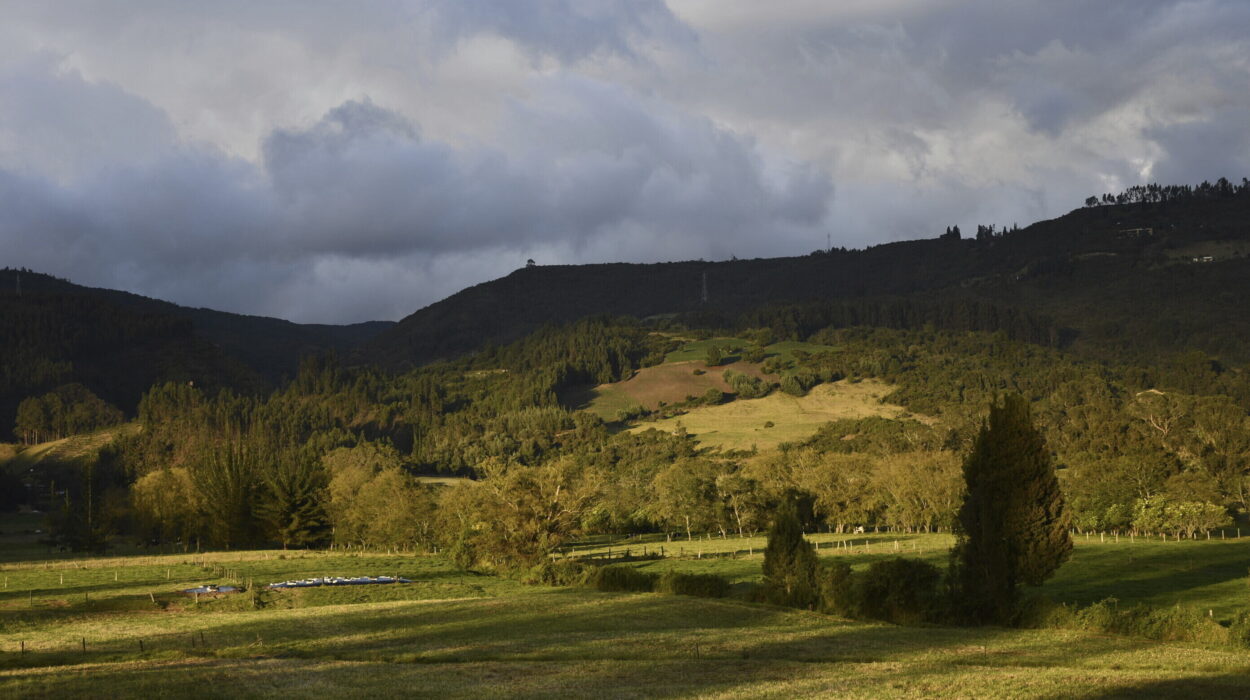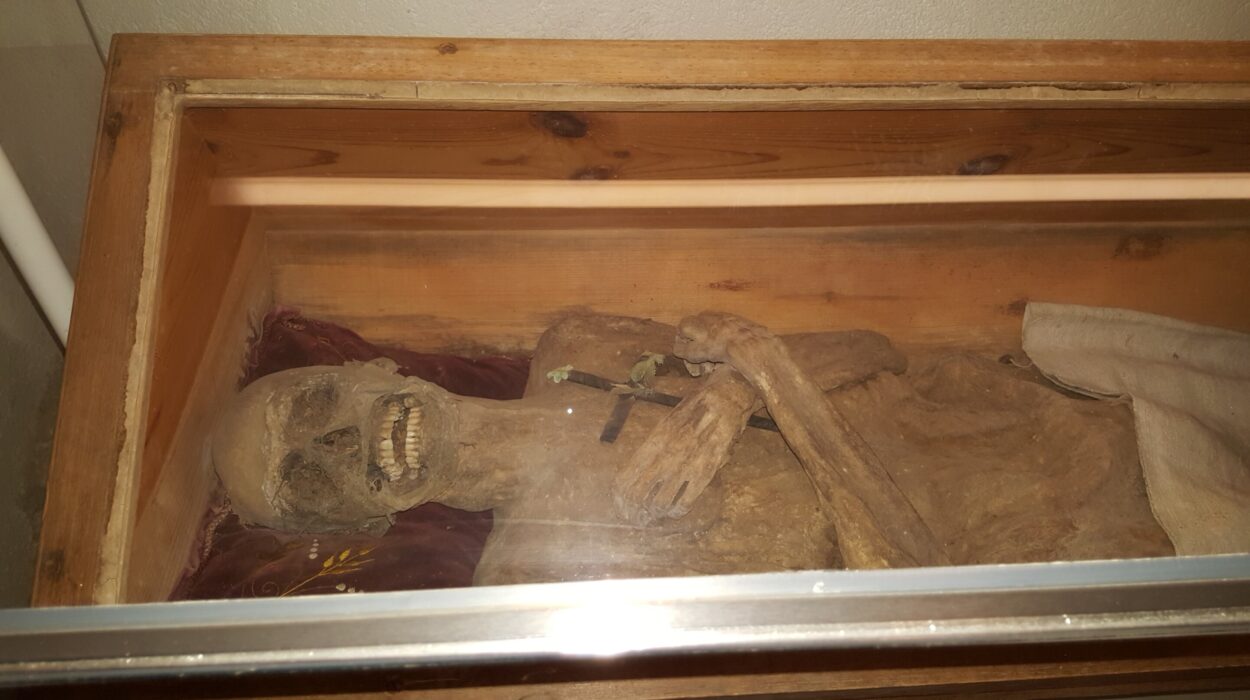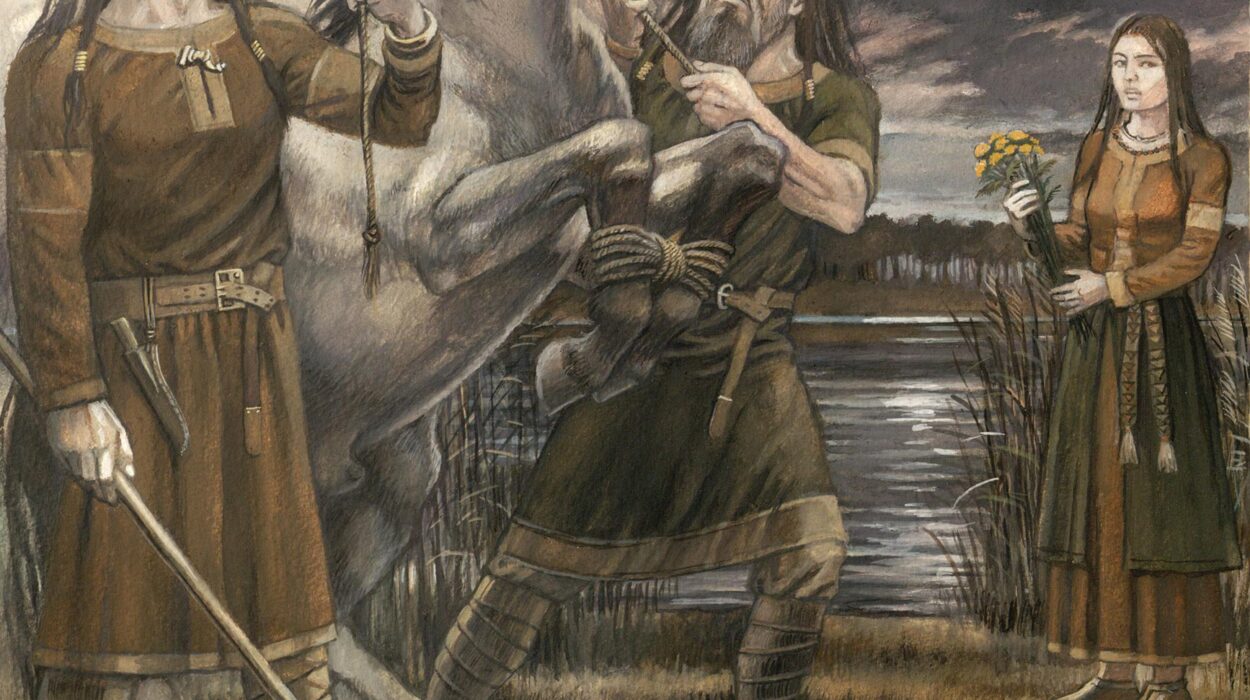Nearly a millennium ago, in what is now southwestern Türkiye, a young child was laid to rest beneath the earth of the ancient city of Aphrodisias. The burial was simple, tucked within a cemetery near the city’s Tetrapylon — a grand monument that once marked the crossing of ancient streets. The child, no older than three years, would have lived a brief but difficult life, suffering from a rare and painful illness that left visible marks on the tiny bones now carefully preserved by time.
Today, centuries later, this child’s story has resurfaced through the meticulous work of scientists. In the journal Childhood in the Past, Ph.D. candidate Duru Yağmur Başaran from Türkiye published an extraordinary study revealing that the child, buried around the 10th to 12th century during the Middle Byzantine period, may have suffered from an exceptionally rare disease known as Infantile Cortical Hyperostosis — or Caffey disease.
The discovery is not just about one child. It opens a rare window into the medical realities of childhood in the medieval world, a time when disease, malnutrition, and hardship often shaped the short lives of the very young.
Unearthing the Past
The child’s remains were first excavated in 1985 from the site known as Tomb 73A within the Tetrapylon Cemetery at Aphrodisias. This site, famed for its grand temples, marble sculptures, and artistic legacy, was also home to a quieter story — that of everyday people who lived, struggled, and died in the shadows of empire.
Tomb 73A contained the remains of two young children, labeled 73A and 73B. But it was child 73A who immediately stood out. The skeleton displayed several unusual bone deformities: thickening and swelling along the jaw, shoulder blade, and the long bones of the left arm. The most striking abnormality was in the left ulna — the lower arm bone — which had swollen to nearly twice its normal diameter.
Even before any diagnosis, the bones told a story of suffering. The uneven growth and inflammation hinted at a disease that had not only distorted the child’s small body but may have made even basic movements painful.
Piecing Together an Ancient Puzzle
Determining the cause of such skeletal deformities is a meticulous process — part science, part detective work. Researchers compare patterns of bone change with known diseases, searching for clues in every mark, ridge, and swelling.
Başaran and her team examined several possible conditions that could explain the abnormalities: rickets, scurvy, tuberculosis, various forms of anemia, and even trauma from physical abuse. Each disease was considered and ruled out one by one.
Scurvy, caused by vitamin C deficiency, leads to brittle bones and bleeding, but the pattern didn’t match. Rickets, a result of vitamin D deficiency, causes bowed legs and soft bones, but not the kind of thickening seen in the Aphrodisias child. Tuberculosis could leave lesions on the skeleton, yet it failed to explain the localized swelling of the jaw and arm.
What emerged instead was a pattern strongly resembling Infantile Cortical Hyperostosis — a condition so rare that even today, it confounds modern medicine.
The Enigma of Caffey Disease
Infantile Cortical Hyperostosis (ICH), or Caffey disease, is a mysterious disorder of infancy that causes inflammation of the periosteum — the thin layer of tissue surrounding bones. This inflammation triggers the body to deposit new layers of bone, leading to visible thickening and swelling, especially in the jaw, forearm, collarbone, shoulder blade, and ribs.
The condition typically appears around five months of age and, curiously, often resolves on its own by the age of three — the very age of the Aphrodisias child. This spontaneous recovery makes ICH particularly puzzling, both for ancient and modern researchers.
Children with ICH often experience fever, irritability, and severe pain due to the inflammation. The swelling can be so pronounced that feeding becomes difficult when the jaw is affected. Over time, this can lead to malnutrition, which in turn slows growth and alters the appearance of bones — a factor that may explain the discrepancy between the child’s dental age (2.5–3.5 years) and the younger age estimate suggested by bone length (around 1.5–2 years).
In the case of the Aphrodisias child, the skeletal evidence even showed signs of early recovery. The bone thickening appeared to have stabilized, suggesting that the disease was subsiding just before the child’s death. That glimpse of healing — frozen in bone — offers a hauntingly human moment: the possibility that the child’s body was fighting its way toward recovery when life ended abruptly.
A Disease Rarely Seen in the Archaeological Record
Infantile Cortical Hyperostosis is not only rare in modern medicine — it is almost never found in archaeological contexts. To date, only a handful of ancient cases have been identified worldwide. Its rarity makes the Aphrodisias find exceptionally significant.
Diagnosing diseases in ancient remains is always a challenge. Without soft tissues, blood tests, or written records, researchers rely entirely on bone morphology. Diseases that affect soft tissue or internal organs often leave no trace, while others, like ICH, can dramatically reshape the skeleton.
That is why the Aphrodisias case is invaluable. It provides a reference point for recognizing similar conditions in other archaeological contexts, helping scientists refine diagnostic criteria for rare diseases in the past. Each new discovery adds a fragment to the broader puzzle of ancient health — revealing not just what killed people, but how they lived and endured illness.
Life and Death in Middle Byzantine Aphrodisias
The Middle Byzantine period was a time of both continuity and change. While Aphrodisias had lost its former splendor as a center of Roman art and philosophy, it remained inhabited and culturally vibrant. The people buried in its cemeteries were not nobles or scholars, but ordinary families who lived in the rural heart of the Byzantine Empire.
Child mortality was tragically common during this time. Malnutrition, infectious disease, and limited medical knowledge meant that many children never reached adulthood. The discovery of a rare genetic or inflammatory condition in a child from this era shows that ancient populations faced not only epidemic diseases like plague or tuberculosis but also rare disorders that continue to puzzle scientists today.
The deformities of the Aphrodisias child suggest that caring for this infant must have been an emotional ordeal. Feeding would have been difficult, and the swelling of the jaw and arms likely caused visible pain. Yet, the fact that the child survived for several years — and even began to recover — implies that someone cared deeply, providing food, comfort, and attention despite the hardships. The bones speak not only of disease but of love.
A Window into Ancient Medicine and Compassion
The Aphrodisias child reminds us that even in a world without modern medicine, communities cared for their sick. Byzantine society had hospitals and healing traditions rooted in both ancient Greek medicine and Christian charity. Physicians of the time wrote about childhood illnesses, fevers, and the humors — though they would not have recognized ICH by name.
What is remarkable is that this disease, which today requires genetic analysis to diagnose, left behind traces so distinctive that modern science can identify it centuries later. The bones of the Aphrodisias child bridge the gap between ancient suffering and modern understanding — a connection across time that gives voice to a child who could not speak.
The Ongoing Mystery of Infantile Cortical Hyperostosis
Even today, Caffey disease remains partly enigmatic. Some cases appear spontaneously, while others seem to run in families, suggesting a hereditary factor. A genetic mutation in the COL1A1 gene — responsible for collagen formation — has been linked to some familial cases, but the full picture is far from complete.
That uncertainty makes archaeological cases like the Aphrodisias child all the more valuable. They provide not just a historical record but also a biological one — evidence of how such diseases manifested in real human bodies long before modern medicine began to document them.
As Başaran noted in her study, it is impossible to determine whether the child died directly from ICH, from its complications, or from an unrelated cause. But the presence of healing suggests that the disease was not necessarily fatal at the time of death. Like so many children of the past, the Aphrodisias child’s life was cut short by circumstances that remain forever unknown.
Lessons from a Small Skeleton
The bones of this Byzantine child offer more than medical data — they tell a deeply human story. They remind us that behind every scientific discovery lies a person who lived, felt pain, and was loved. Archaeology, in this sense, is not just the study of objects or bones; it is the study of lives once lived.
Through biology and careful analysis, we can give voice to those silenced by time. The Aphrodisias child, though long gone, continues to teach us — about resilience, care, and the universal struggle against illness that unites humanity across the centuries.
The Legacy of the Aphrodisias Child
The discovery contributes to a growing field known as bioarchaeology — the study of human remains to understand ancient health, lifestyle, and disease. Each case like this helps refine the methods scientists use to diagnose conditions in the archaeological record. It bridges gaps between the past and the present, between science and empathy.
Ultimately, the story of the Aphrodisias child is not just about pathology. It is about connection. It reminds us that even in the distant Middle Ages, far from modern hospitals and technology, human beings cared for one another in the face of suffering. A disease that still puzzles modern doctors once shaped the life of a child in an ancient city — and through that child’s bones, it continues to illuminate the shared human experience of fragility and hope.
The Aphrodisias child’s tiny skeleton, preserved for nearly a thousand years, now serves as a quiet testament to the endurance of life and the power of science to recover lost stories. In its fragile bones, we find both tragedy and triumph — the eternal echo of humanity itself.
More information: Duru Yağmur Başaran, A Possible Case of Infantile Cortical Hyperostosis from Middle Byzantine Aphrodisias, Türkiye, Childhood in the Past (2025). DOI: 10.1080/17585716.2025.2555855
